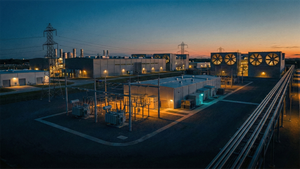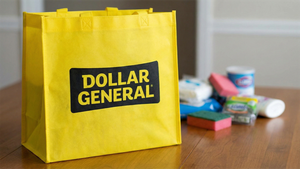
Solar panel manufacturer First Solar (NASDAQ: FSLR) met Wall Street’s revenue expectations in Q1 CY2025, with sales up 6.4% year on year to $844.6 million. On the other hand, the company’s full-year revenue guidance of $5 billion at the midpoint came in 8.7% below analysts’ estimates. Its GAAP profit of $1.95 per share was 22.1% below analysts’ consensus estimates.
Is now the time to buy FSLR? Find out in our full research report (it’s free).
First Solar (FSLR) Q1 CY2025 Highlights:
- Revenue: $844.6 million vs analyst estimates of $847.9 million (6.4% year-on-year growth, in line)
- EPS (GAAP): $1.95 vs analyst expectations of $2.50 (22.1% miss)
- Adjusted EBITDA: $45.3 million vs analyst estimates of $380.6 million (5.4% margin, 88.1% miss)
- The company dropped its revenue guidance for the full year to $5 billion at the midpoint from $5.55 billion, a 9.9% decrease
- EPS (GAAP) guidance for the full year is $15 at the midpoint, missing analyst estimates by 16.9%
- Operating Margin: 26.2%, down from 30.6% in the same quarter last year
- Free Cash Flow was -$813.9 million compared to -$145.7 million in the same quarter last year
- Market Capitalization: $14.72 billion
StockStory’s Take
First Solar’s first quarter results reflected operational headwinds tied to shifting geographic sales mix and ongoing industry policy changes. Management attributed the quarter’s profit shortfall to a larger portion of module sales coming from international facilities, while U.S. production volumes lagged internal forecasts due to manufacturing and shipment timing issues. CEO Mark Widmar acknowledged that the company’s ability to mitigate these challenges was constrained by continued policy uncertainty around tariffs and clean energy tax credits.
Looking ahead, management’s revised full-year guidance sharply lowered both sales and profit expectations, citing the evolving U.S. tariff landscape and its ripple effects on customer demand and production allocations. Widmar characterized the current environment as highly unpredictable, noting that future decisions on production, contract fulfillment, and capital allocation will depend on the final structure of tariffs and the fate of key U.S. clean energy incentives. As a result, the company is prioritizing operational flexibility and ongoing dialogue with customers to navigate these uncertainties.
Key Insights from Management’s Remarks
First Solar’s management spent the earnings call detailing how shifting trade policy and tariff regimes have created significant uncertainty for both operations and customer demand. The company emphasized its efforts to adapt production plans and manage contract risks while continuing to invest in domestic manufacturing.
- Tariff impact on operations: Management explained that the imposition of new U.S. tariffs on solar modules from India, Malaysia, and Vietnam has made it uneconomical to sell products from these factories into the U.S. market if higher rates are reinstated. The company is considering temporarily idling or repurposing these facilities depending on future tariff decisions.
- Contractual protections: A significant portion of First Solar’s backlog includes clauses that allow contracts to be terminated or renegotiated if tariffs make fulfillment uneconomical. This provides some protection, but also introduces uncertainty about the ultimate conversion of backlog to revenue.
- Domestic manufacturing expansion: The ramp-up of new factories in Alabama and Louisiana continues, with management reaffirming plans to expand U.S. nameplate capacity to over 14 gigawatts by 2026. These expansions are designed to capitalize on incentives for domestic content and to insulate the company from tariff risks.
- Product technology advances: The company completed a limited production run of modules using its CuRe technology, which management claims are demonstrating improved energy output and lower degradation rates in initial tests. These modules are being deployed in commercial and field test sites, and further adoption depends on ongoing validation.
- Customer dynamics amid policy shifts: Management noted increased customer engagement as buyers look to de-risk exposure to tariffs and secure domestic supply. However, uncertainty around future tariffs and the status of U.S. tax credits has delayed finalizing many new contracts and bookings.
Drivers of Future Performance
Management’s outlook for the year is shaped by the interplay of tariff policy, clean energy incentives, and supply chain flexibility, all of which are expected to impact production volumes, pricing, and margins in the coming quarters.
- Tariff regime uncertainty: The future profitability and utilization of First Solar’s international plants hinge on whether temporary universal tariffs remain in place or higher, country-specific rates are imposed. Management is maintaining flexibility, including the possibility of idling plants or shifting production toward domestic markets like India.
- U.S. policy and tax credits: The fate of the Inflation Reduction Act’s manufacturing and investment tax credits will directly influence First Solar’s domestic expansion plans and the economics of supplying U.S. customers. Management is closely watching legislative developments and advocating for provisions that favor U.S.-sourced modules.
- Customer contract negotiations: Pending decisions on tariff cost-sharing and contract renegotiations could affect backlog conversion, shipment timing, and pricing. Management indicated that much of the company’s forward visibility depends on the outcome of ongoing discussions with customers.
Top Analyst Questions
- Philip Shen (ROTH Capital Partners): Asked how tariffs are affecting new bookings and whether uncertainty is causing customers to delay or cancel orders. Management said customer engagement has increased as buyers seek to secure domestic supply, but uncertainty has slowed contract finalizations.
- Andrew Percoco (Morgan Stanley): Questioned the extent to which guidance reductions were driven by battery storage supply chain issues versus broader demand. Management responded that the main driver was tariffs making international production uneconomical, not underlying demand.
- Kashy Harrison (Piper Sandler): Inquired about strategic options for international assets if tariffs remain high, including relocating equipment or repurposing facilities. Management said options depend on future policy, including potentially moving equipment to the U.S. or establishing finishing lines domestically.
- Brian Lee (Goldman Sachs): Asked about the willingness to accept lower margins versus passing tariffs on to customers and the timeline for expanding U.S. finishing capacity. Management said current guidance assumes absorbing tariff costs, but future contracts may share these costs, and that setting up new finishing lines could take 9–12 months if warranted.
- Julien Dumoulin-Smith (Jefferies): Sought clarity on repricing risk for the company’s backlog if tariffs remain elevated. Management stated that most backlog is insulated from repricing except for about 12 gigawatts tied to international production, with outcomes depending on customer negotiations and possible facility changes.
Catalysts in Upcoming Quarters
In upcoming quarters, the StockStory team will monitor (1) final decisions on U.S. tariff structures and whether reciprocal tariffs are reinstated or replaced, (2) legislative progress on clean energy tax credits and their impact on First Solar’s domestic expansion plans, and (3) the pace of contract renegotiations for international backlog volumes. Additionally, the ramp-up of new U.S. manufacturing facilities and adoption of the company’s CuRe technology will be important indicators of execution.
First Solar currently trades at a forward P/E ratio of 6.2×. In the wake of earnings, is it a buy or sell? See for yourself in our free research report.
Our Favorite Stocks Right Now
The market surged in 2024 and reached record highs after Donald Trump’s presidential victory in November, but questions about new economic policies are adding much uncertainty for 2025.
While the crowd speculates what might happen next, we’re homing in on the companies that can succeed regardless of the political or macroeconomic environment. Put yourself in the driver’s seat and build a durable portfolio by checking out our Top 6 Stocks for this week. This is a curated list of our High Quality stocks that have generated a market-beating return of 175% over the last five years.
Stocks that made our list in 2019 include now familiar names such as Nvidia (+2,183% between December 2019 and December 2024) as well as under-the-radar businesses like Comfort Systems (+751% five-year return). Find your next big winner with StockStory today.






